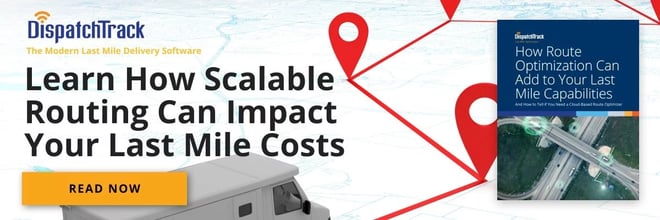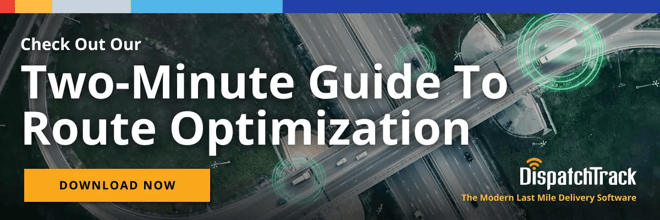Creating route plans for drivers is no walk in the park. Route planning, especially when there are hundreds or even just dozens of delivery routes, is not possible without any tools. It would take many hours to manually plot routes for a single driver, and even then, the company would only save a few minutes for the driver. This should prompt any company to ask: is it really worth devoting this much time to manually planning routes?
.webp?width=660&name=route-optimization%20(1).webp)
Some would ditch planning altogether and instead dispatch their drivers as deliveries come. However, this strategy is inefficient as multiple drivers will end up being dispatched to the same area, costing the business more fuel consumption than necessary.
And this is just a single example since there are plenty of inefficiencies when organizations go for zero or manual route planning. So, how does a company with delivery operations plan routes more efficiently? In this post, we will discuss route planning and how manual planning compares to having route optimization software, as well as the best ways to optimize delivery route planning.
Understanding Route Optimization
Route optimization is the process of determining the best routes for each delivery driver who will take a package from the hub and bring it to the end customers. It’s a process that should prioritize cost efficiency and speed.
Optimizing routes isn't necessarily about finding the shortest distance, as the process is more particular about reducing the overall driving time given the multiple delivery assignments per driver. Optimizing delivery routes also means considering various facts such as:
- Driver schedule
- Delivery time windows
- Vehicle weight and/or volume capacity
- Traffic congestion
- Hub location and/or driver proximity
- Distance between stops
- Road accidents and other conditions
Determining the best routes for drivers through manual means is burdensome if not outright impossible. There are millions of route options even if you manage just a few delivery vehicles with a handful of stops each.
On the other hand, truck router software can find the best routes in just a few seconds, factoring in the many variables involved in route planning to do it more effectively.

The Importance of Route Optimization
Route optimization is critical for many reasons. Consider that even the best planners don't have the computing power and speed of route optimization software.
Last mile deliveries are more complex than ever, thanks to consumers' changing expectations, tighter regulations, more traffic congestion, and so on. Finding the best routes for drivers to follow is a necessary component to ensure the survivability and continued financial health of a company. This is because last mile delivery now accounts for roughly 53 percent of the overall shipping costs and as much as 41 percent of the total supply chain costs.
Is Manual Planning Feasible?
Is it possible for companies to stick to manual route planning? The answer is yes, but it's not cost-effective.
Micro enterprises with just one or two vehicles have the option of sticking to manual planning. But other businesses with more vehicles and higher delivery volumes will have a hard time making manual route planning work, as there is a higher number of stops and more possible route options. Planning will take many hours and many planners, but the routes planned aren't necessarily the most optimal.
Sure, there are now more apps that drivers rely on such as Waze and Google Maps. But can they be used instead of route optimization software? The answer is no if the business intends to keep last mile delivery costs low.
Navigation apps such as Waze and Google Maps are designed for a single stop, or simply for drivers who only need to get from point A to B. These apps aren't the best options for drivers handling multiple deliveries and for businesses with several drivers.
One can't expect these apps to plan delivery routes of tens or hundreds of stops every day. Planners and drivers will have to enter addresses manually, a task that's prone to many errors.

Why Route Optimization Software is the Best Practice
Route optimization software is the key to improving efficiency in the last mile delivery process. The software can lower operational costs, increase revenue, and save drivers and companies plenty of time.
Here's why route optimization software is a worthwhile investment.
Shortened Delivery Time
Optimizing delivery routes leads to 20 to 40 percent savings in drive time and fuel costs. The software's algorithm can be likened to a personal assistant who allows the executive to focus on other tasks, as it eliminates hours of manually plotting routes.
Easy-to-Follow Routes
Drivers who need to follow manually plotted routes have difficulties deciphering the route plans provided to them. On the other hand, route optimization software transforms the routes into a visual map, thereby eliminating the need to decipher routes. Drivers and dispatchers can easily spot where the delivery stops are located and the route they need to take to get there.
Automated Dispatching
Manual route planning results in multiple printouts detailing the routes drivers must take, requiring the dispatch team to distribute plans to each driver every single day.
In contrast, everything is done digitally with route optimization software. It will be the software that will dispatch drivers and tell them where to go and how to get to their assigned delivery points. Likewise, the software will take care of informing drivers of any instructions as they drive.
Continuous Performance Improvements
Route optimization software isn't only about finding the best routes for drivers every day. It's also a tool that can be used to spot problematic areas of the workflow so they can be improved.
Most software has built-in reporting features that can be used by managers to identify areas of operations that can be improved to lower operational costs. Some of the metrics that can be tracked using the software are as follows:
- Service times
- On-time rates
- Customer feedback performance
- Successful deliveries
- Drop-offs per pick up
- Idle time
Increase Customer Satisfaction
Consumers now demand visibility on their orders. They demand to know where their orders are in real-time, as well as an accurate expected time of arrival (ETA).
Some route optimization software has real-time driver tracking capability, allowing both the business and the customer to know the location of the delivery driver and the delivery time window. Some software also provides consumers with real-time status updates to manage customers’ expectations. All these features help companies increase customer satisfaction levels.
Manual route planning just doesn’t cut it anymore, especially since last mile delivery operations have become more complex and more expensive. In the end, the best practice for optimizing routes is to rely on dynamic route optimization and planning software and use it to identify inefficiencies in your delivery operations.
Learn how DispatchTrack’s route optimization software will save you money and improve efficiency and customer satisfaction by scheduling a demo today.